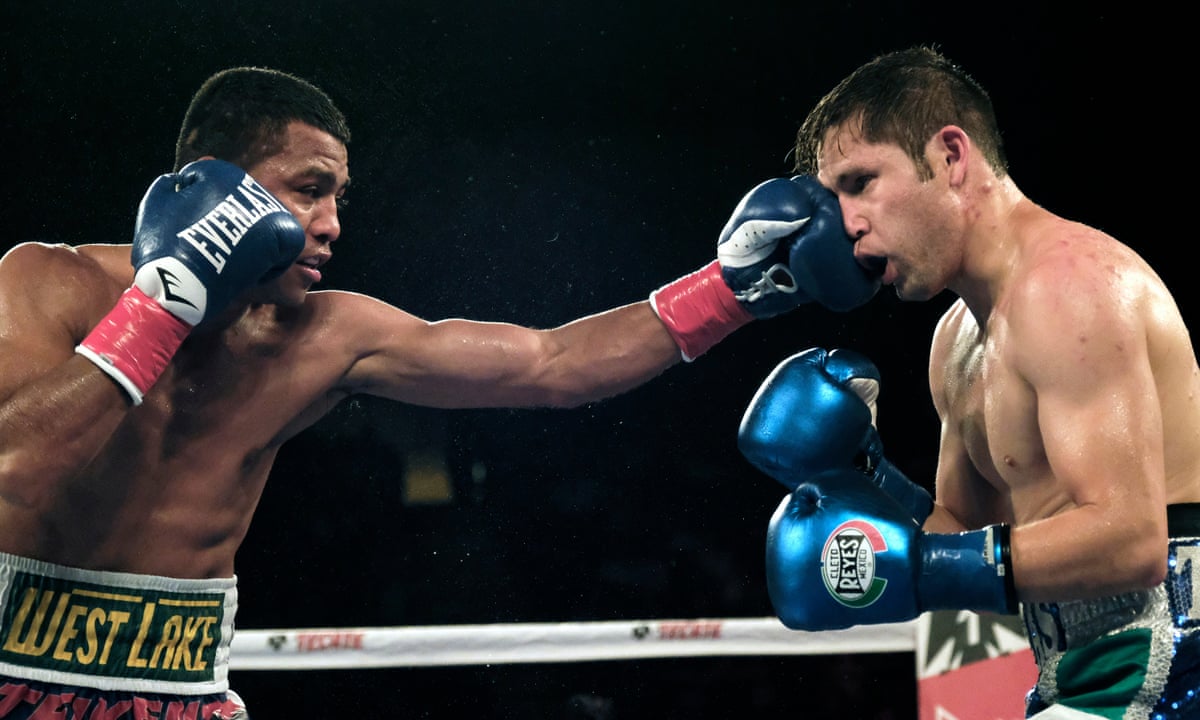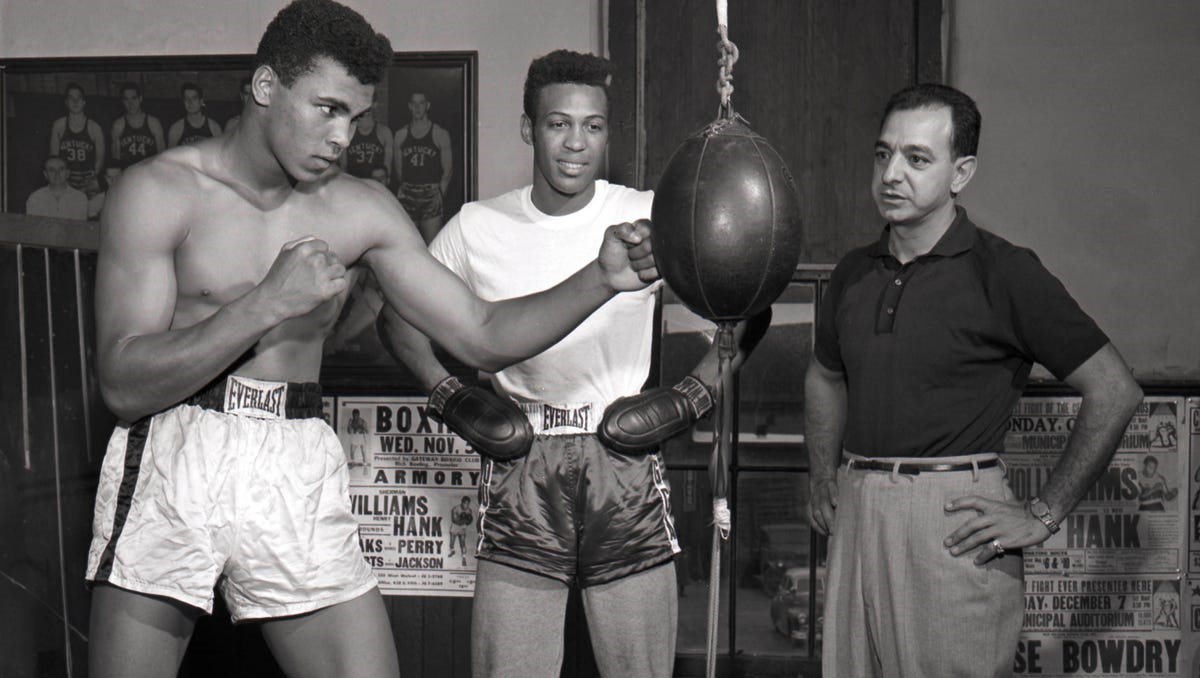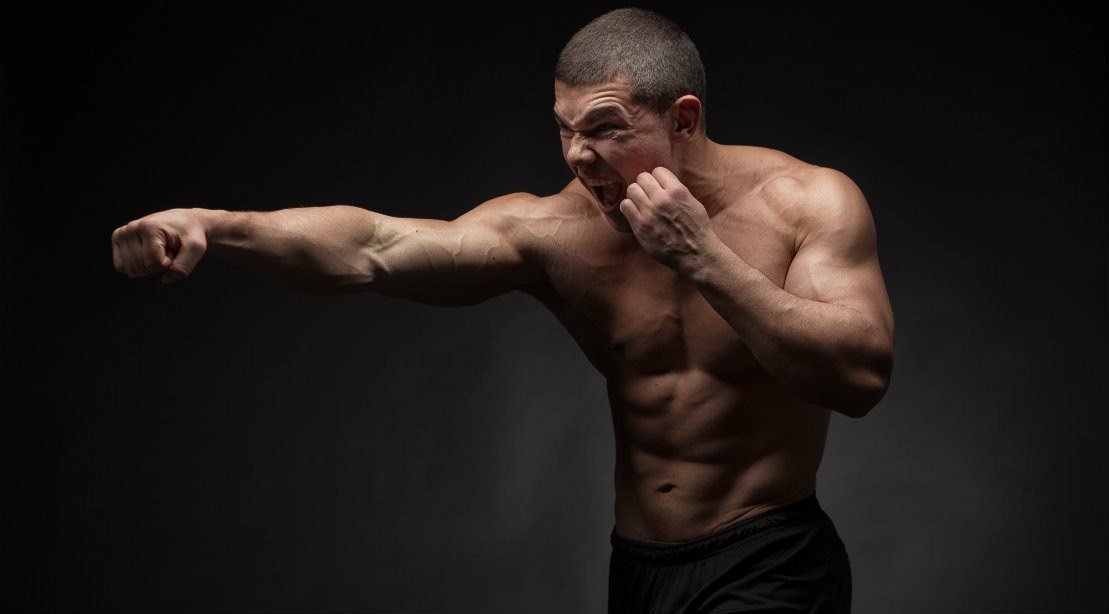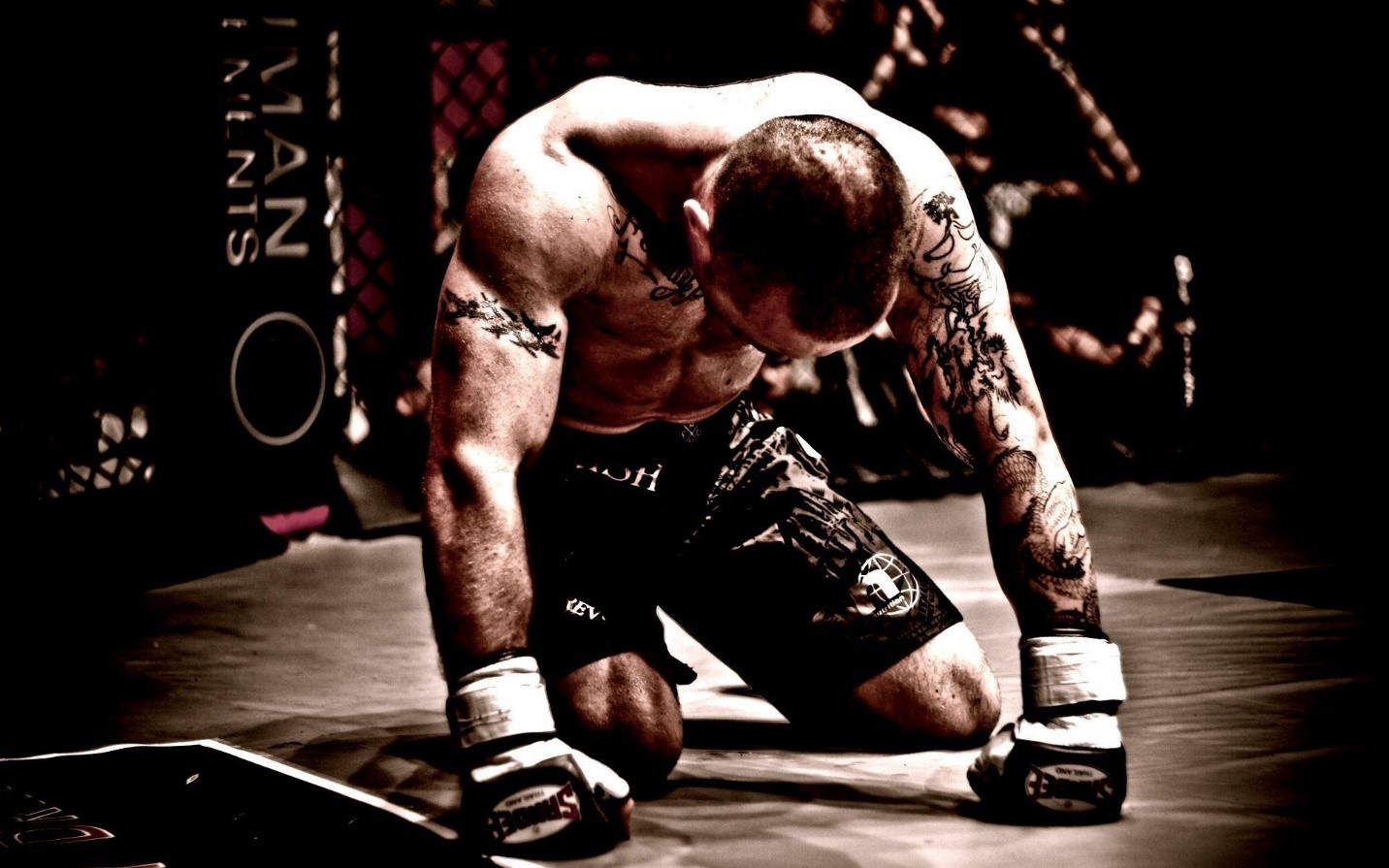Yearning to increase hand speed?
Increasing hand speed in boxing is just half the journey. You need to punch faster and deliver a lot of power.
To do that, quickly turn on all your muscle motors. Have them develop a rapid force. Then use the best economy of motion to jab, cross, or hook, etc. You’ll soon generate a lethal amount of force enough to knock out your opponent.
A single-hand speed drill won’t optimally enhance your speed, though.
So, identify your punching imperfections first and practice multiple drills and exercises to increase your hand speed.
Let me explain.
Hand speed is one of the major differences between pro boxers and beginners. Most amateurs think superior hand speed is all you need if you’re a swarmer.
This is true in the lower ranks. But in the upper ranks? An average fighter can throw up to 300 punches a minute — if they don’t think about the defense.
If you want to reach the higher ranks of boxing, you need to improve your punching speed. Follow these tips to develop this aspect of your game.
Tips to Improve Your Punching Speed
1. Learn the Perfect Punching Technique
The perfect punching technique is to throw your punches with relaxed muscles. You should only contract your muscles when your punch lands.
That explains why most fighters don’t have clenched fists when they’re in the guard position. Instead, amateur boxers usually clench their fists from the release to the follow-through — making their punches look and feel sluggish.
This technique is difficult to execute for beginners. You need to practice your punches at home to become accustomed to the sequence. To practice, throw gloveless punches to a double-end bag while following these guidelines:
- Practice the 1-2 punch combination — Start in the guard position with your arms bent but relaxed. Your fingers folded to a fist but not clenched.
- Throw your jab by twisting your torso towards the target, extending your lead arm, and stepping forward to generate the force required. Your arms and your fist shouldn’t be clenched in the motion.
- Right before your jab hits the target, clench your fist and contract the muscles in your arms and back.
- Make the same pattern of movements when throwing your straight.
For beginners, the timing of the clenching of the fists is usually off. However, as you practice your punches more, you’ll be able to time your punches right.
2. Practice Your Combinations Everyday
After choosing your fighting style, identify punch combinations effective to your style. As stated before, experienced boxers fight from the outside. That way, they’re more likely to use jabs and straights to gain points.
For power punches, the pro boxer prefers overhands and counter crosses. They also use short punches to get out of the opponent’s reach and deliver power combinations when having the upper hand.
To become a great boxer, train your long-range punches. Then train the combinations you’ll use either when the opponent is tired or if you’re finishing the opponent off.
If you’re a swarmer — that is, a fighter who attempts to overwhelm his opponent by applying constant pressure — you’ll need to use more combinations of short punches.
The goal is to hit your opponent from all angles.
Also, utilize the jab combinations just to move closer to the opponent. Once inside, push the fight’s tempo — by delivering combinations designed to slip your power punches in. Do this while still keeping your defense up.
Puncher boxers need both punching combinations of out-boxers and swarm boxers. If you want to use this fighting style, practice long-distance combinations.
Also, have a set of go-to combinations when the opponent comes too close.
Practice your chosen combinations every day. Throughout your career, you’ll find new combinations you can add to your arsenal. Continuously train for new combinations to become unpredictable in the ring.
If you keep practicing your combinations, you’ll become faster when throwing them. You’ll even develop muscle memory in throwing these combinations. And when the opportunity comes, automatically unload the combination with blazing speed.
3. Develop a Fast Reaction Time
The effectiveness of your punches will depend on the speed of your reactions to openings and opportunities for combinations.
When they see opportunities, boxers with fast reaction times can score more knockouts than those who only rely on combinations.
Pad work is one of the best training methods to train your reaction speed. You’ll need a trainer to hold the pads for you.
Each pad position should represent a vulnerable part of the opponent’s body. For example, when the trainer puts the mitts at head level, he’s training you to hit the head.
If it’s in a lower position, he’s training you to use body shots. You can only effectively use pad training if you have already practiced your preferred combinations.
4. Spend More Time with the Double-End Bag
The double-end bag is one of the best tools to use when developing hand speed and reaction time. However, the movements of the double-end bag are difficult to anticipate at first.
Its movement is also too fast for most beginners.
Give the double-end bag a few tries before catching it with your punches consistently. If you’re training to increase your hand speed in boxing, practice your combinations with the double end bag for maximum results.
5. Go Heavy on the Heavy Bag (With your Trainer’s Supervision)
Go all out on the heavy bag and throw as many combinations in a minute as possible. Throw the combinations that you already practiced beforehand.
Your trainer should time and supervise you while taking note of your form lapses. Don’t worry about time when doing this hand speed exercise. Instead, focus on the speed of your punches and the combinations you’re throwing.
At this point, your trainer should explain the factors affecting your hand speed as you won’t be able to spot them yourself. Also, continually check if your speed is improving.
Throwing wide punches is a common factor that slows down beginners.
In this hand speed exercise, always practice throwing your punches from the guard position. The fastest fighters often start with the guard to defend themselves — and sometimes throwing varying combinations.
Guard your thought process while in a match as well. Focus solely on your target when practicing or sparring. Don’t allow outside-the-ring forces to distract you. This is an excellent exercise to prepare you for the actual fight.
Outside the ring, multiple distractions abound. Fans will shout at you from all around the ring. Lose focus, and your punches will slow down and widen.
6. Shadowbox Your Combinations
Even if you don’t have access to a boxing gym, you need to practice your combinations. When at home, for example, find a spot to practice your footwork and combinations.
When shadowboxing, imagine your opponent is in front of you. Then throw punches at them and combinations with proper form. And for the 100th time, relax when throwing punches — in short, monitor your breathing pattern.
You should be able to throw punches and move around in at least three minutes. After one round, rest for a minute. Then do another three-minute shadowboxing round.
7. Practice Hand Speed during Sparring Sessions
Hand speed exercises are pointless if you can’t mirror the tactics in the ring.
So, try to spar with other boxers who’ve trained for as long as you have. And avoid sparring with boxers beneath your level.
In a sparring match, execute your ideal game plan and deliver your combinations with maximum and masterful speed.
If you plan to play from outside of the reach of your opponent, execute your best style. And use your hand speed to throw jabs and long combinations.
Also, if you plan to swarm your opponents, practice defensive movements as you enter the opponents’ range — and short combinations as you attack. Finally, whatever style you choose, consistently execute your combinations at high speed.
Factors Affecting the Power of Your Punches
Heavyweight Deontay Wilder had “scary” punch power in the ring.
Out of 43 career fights, 41 Wilder victories were knockouts. He recorded the highest knockout percentage (95.3%) ever! The legendary Muhammad Ali won 37 of his 56 career fights through knockouts.
This doesn’t prove Wilder was a better boxer than Ali — or other boxing greats — but his knockout ratio deserves massive honors and recognition.
The knockout is the most impressive way to win in boxing.
While boxing enthusiasts love it when the fight goes the distance, common fans just want their favorite stars to knock their opponents out.
If you also want to score a knockout — or learn how Wilder threw power-packed punches — first consider factors affecting your punches.
Force Behind your Punch
The force behind the punch is an essential factor if you want to knock out your opponents. This is because the force of a punch is proportional to the fighter’s weight.
This is the reason why we have weight divisions in contact sports.
Combinations that use your weight to generate force are more likely to knock out an opponent. Besides the weight behind the punch, the technique used to throw it will most definitely affect its power.
The hand speed techniques we discussed earlier help maximize your boxing power while keeping the punch movements efficient.
Accuracy of your Hit
The accuracy of the hit is also an essential factor. When practicing your punches, work on your accuracy and precision by putting a target on your heavy bag. Also, invest time in hitting moving targets like the speed bag and the double-end bag.
Target your Hit by the Punch
Hitting the opponent in the chest will usually not knock him out. Instead, most knockdowns occur when the opponent takes a hit on the head — pushing the brain to bounce around, hitting the wall of the skull.
Brain trauma causes a fighter to lose consciousness momentarily.
You can also knock an opponent with a well-placed body shot. However, most people raise their guard to protect their faces and the head from power punches — opening up the right rib, where most internal organs nestle, including the liver.
When enough force is applied in this area, a fighter can experience sharp, stinging pain. Most fighters kneel to suppress the pain until it stops.
Even if they continue fighting after the initial knockdown, you can initiate the pain again by punching the same target. To knock your opponents out, you need to hit these targets consistently with the right amount of force.
That said, it’s not wise to always go after knockouts in every fight.
Your opponents will become difficult to knock out with just one punch as you rise in the ranks. So, you should follow your prescribed game plan and consider a knockout only when opportunity calls for it.
Timing your shots
Your opponents are usually aware of your combinations. By anticipating your combinations, they’ll try to avoid your power punches. So, it’s crucial to have a power punch ready at any time when your opponent presents an opening.
If you can hit your opponent in the opening with one of your practiced punches, you’ll be able to time the knockout. The impact is greater if your punch comes as a surprise.
One way to prepare the timing of your shots is to study your opponent’s ahead of time. For example, if your opponents have videos of their fights online, go through them and look for patterns and mannerisms you can exploit.
Amateurs and lower-ranked fighters often have loopholes in their defense that you can easily spot. The defense gets tighter as you move up the rankings.
When you spot movement patterns to exploit, practice the counter punch, you’ll use against it. Then create a combination — using the movement patterns — or a one-punch counter to it. In the gym, practice speed and the timing of your counter punch.
Prepare as many counter punches as you can for other openings in your opponent’s defense. Then make sure to practice them in the heavy bags, the mitts, and in sparring.
Continuously look for those openings when in the ring. Also, ensure your footwork is set when opportunities happen — to prepare to throw a counter.
The Bottom Line?
While boxing is a lucrative sport, it’s violent. So, you need to learn the ropes before you start signing up for boxing matches.
Fortunately for you, I’ve created a valuable Hand Speed Training Camp to walk you through hand speed, power punches, and better footwork.
The best part? We’ll train together. Click the button below and Join at Level 4 for access.
Join Membership
You won’t do the work alone or blindly figure your way out through the program. I’ll lay out all the details, and we’ll hold each other accountable. For five days, we’ll do five full-on boxing workouts aimed at increasing hand speed.
After developing your skills, you’ll need to put more time practicing your moves and game plan. Losing in the gym (or at home) isn’t as bad as losing in real fights. If you’re ready, you can join the Hand Speed Training Camp to improve your boxing skills.





